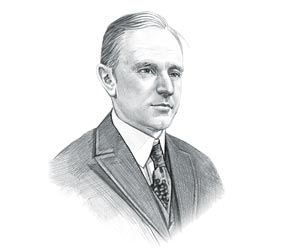|
|
|
|
|
The treaty has been broken on several occasions but it introduced the notion of 'crime against peace' which was used during the Nuremberg Trials following WW2. Facts about
Kellogg-Briand Pact Following WW1 (28 July, 1914 - 11 November, 1918), the Washington Conference (1921 - 1922) was hailed as a great accomplishment which led to 3 major treaties: the Four-Power Treaty, Five-Power Treaty and the Nine-Power Treaty. The success of the pacts that resulted from the Washington Conference inspired politicians to attempt to agree a treaty in an attempt to abolish war and settle any disputes between counties by peaceful means. This idea that diplomatic agreements could end war altogether led to the treaty that became known as the Kellogg-Briand Pact. The basic concept was first proposed in 1927 by Aristide Briand (1862-1932), Prime Minister of France, as a treaty between the United States of America and France banning war between the two countries. Aristide Briand had employed his conciliatory style to supervise the French role in the Washington Naval Conference. He had then received the 1926 Nobel Peace Prize. The United States Secretary of State Frank B. Kellogg (1856 - 1937) responded to Briand's idea with an innovative proposal for a general pact against war. Frank B. Kellogg and Aristide Briand authored the treaty and entered negations to obtain agreements to the plan with other countries. The treaty became known as the Kellogg-Briand Pact, was signed in Paris on August 27, 1928. It was proclaimed on July 24, 1929 and signed by the United States of America, Australia, Dominion of Canada, Czechoslovkia, Germany, Great Britain, India, Irish Free State, Italy, New Zealand, and Union of South Africa. Other adherents followed on March 2, 1929: By Poland, March 26, 1929; by Belgium, March 27 1929; by France, April 22, 1929 and by Japan on July 24, 1929. The 1928 Kellogg–Briand Pact was concluded outside the League of Nations, and still remains in effect. It was ultimately ratified by 62 nations. The Kellogg–Briand Pact did not live up to its goal of ending war and proved to be ineffective as countries, having renounced the use of war, began to wage wars without actually declaring war. On the negative side, the treaty has been broken repeatedly as in the Japanese invasion of Manchuria in 1931, the Italian invasion of Abyssinia in 1935, the Soviet invasion of Finland in 1939, the German and Soviet Union invasions of Poland and the United States invasion of Grenada in 1983. On the Positive side, it introduced the notion of 'crime against peace'. -- for committing this crime, the Nuremberg Tribunal sentenced a number of persons responsible for starting World War II during the Nuremberg Trials. Frank Kellogg was awarded the 1929 Nobel Peace Prize in recognition for his accomplishment. |
| US American History |
| 1913-1928: WW1 & Prohibition |
|
|
|
|
|
First Published2016-04-19 | |||
|
Updated 2018-01-01 |
Publisher
Siteseen Limited
| ||
|
|

